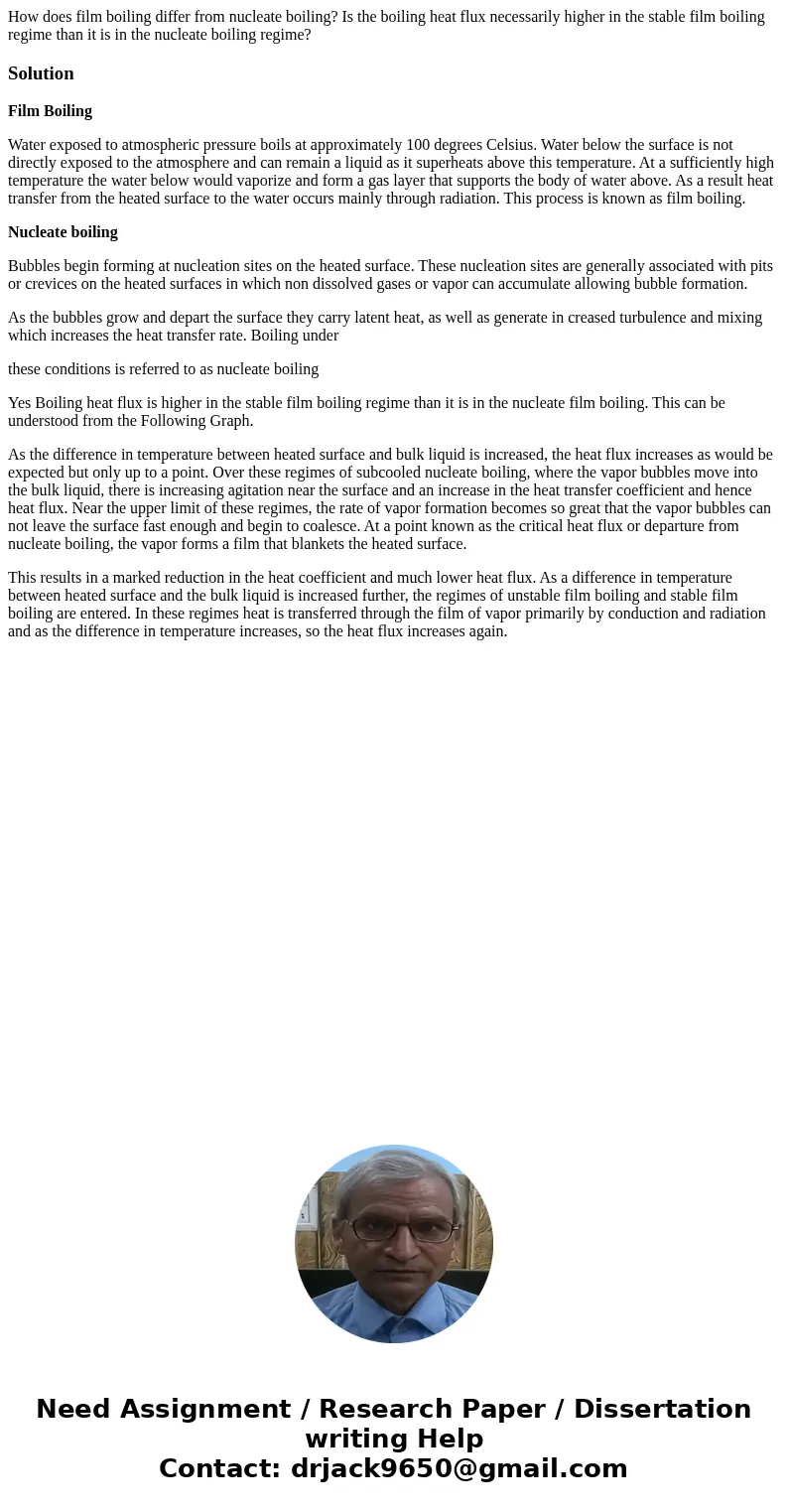How does film boiling differ from nucleate boiling Is the bo
Solution
Film Boiling
Water exposed to atmospheric pressure boils at approximately 100 degrees Celsius. Water below the surface is not directly exposed to the atmosphere and can remain a liquid as it superheats above this temperature. At a sufficiently high temperature the water below would vaporize and form a gas layer that supports the body of water above. As a result heat transfer from the heated surface to the water occurs mainly through radiation. This process is known as film boiling.
Nucleate boiling
Bubbles begin forming at nucleation sites on the heated surface. These nucleation sites are generally associated with pits or crevices on the heated surfaces in which non dissolved gases or vapor can accumulate allowing bubble formation.
As the bubbles grow and depart the surface they carry latent heat, as well as generate in creased turbulence and mixing which increases the heat transfer rate. Boiling under
these conditions is referred to as nucleate boiling
Yes Boiling heat flux is higher in the stable film boiling regime than it is in the nucleate film boiling. This can be understood from the Following Graph.
As the difference in temperature between heated surface and bulk liquid is increased, the heat flux increases as would be expected but only up to a point. Over these regimes of subcooled nucleate boiling, where the vapor bubbles move into the bulk liquid, there is increasing agitation near the surface and an increase in the heat transfer coefficient and hence heat flux. Near the upper limit of these regimes, the rate of vapor formation becomes so great that the vapor bubbles can not leave the surface fast enough and begin to coalesce. At a point known as the critical heat flux or departure from nucleate boiling, the vapor forms a film that blankets the heated surface.
This results in a marked reduction in the heat coefficient and much lower heat flux. As a difference in temperature between heated surface and the bulk liquid is increased further, the regimes of unstable film boiling and stable film boiling are entered. In these regimes heat is transferred through the film of vapor primarily by conduction and radiation and as the difference in temperature increases, so the heat flux increases again.

 Homework Sourse
Homework Sourse